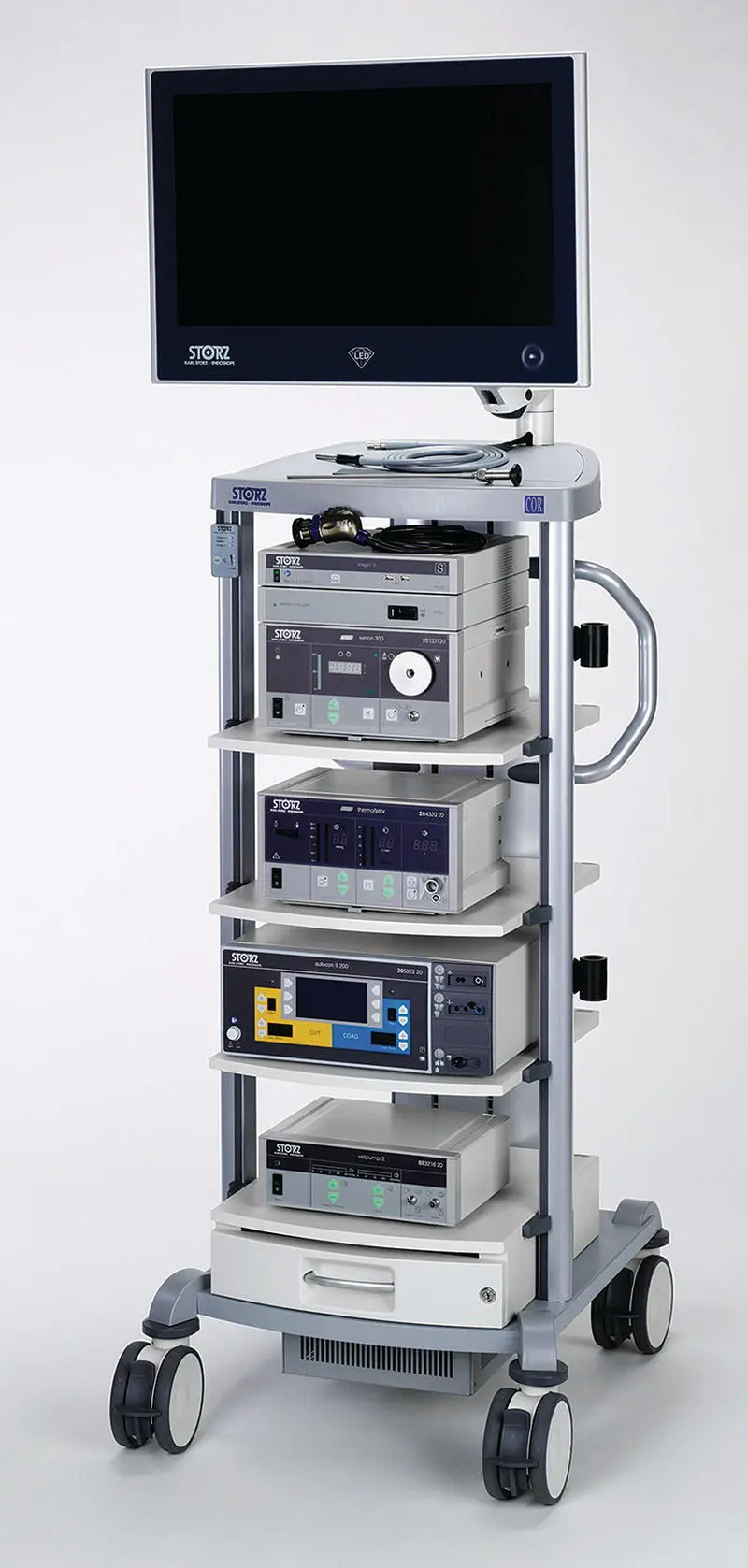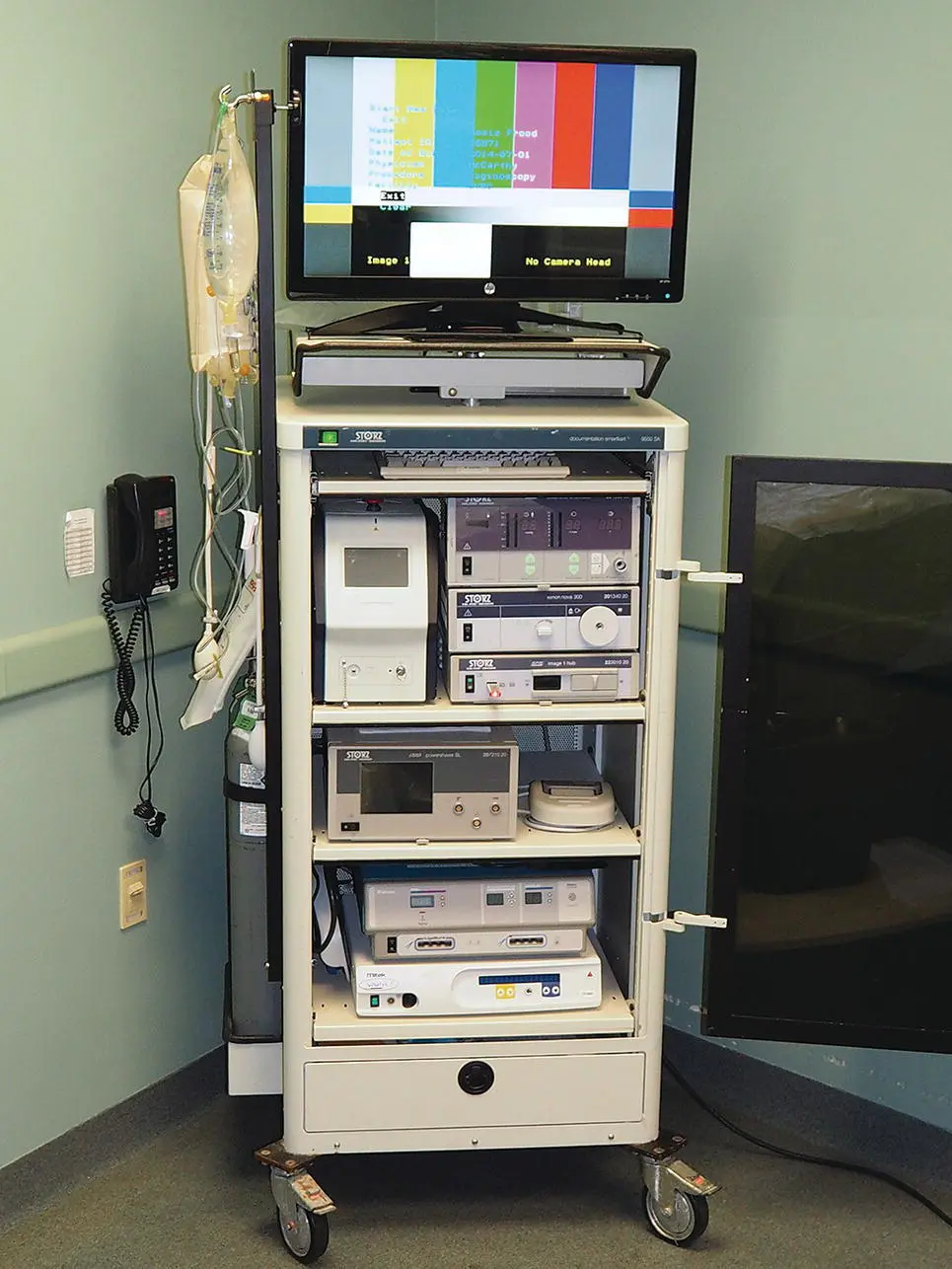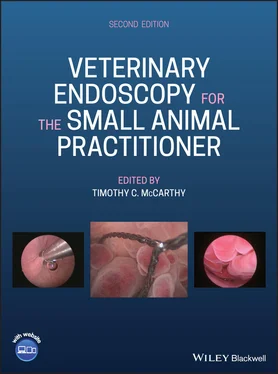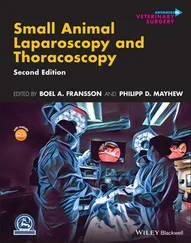When performing diagnostic endoscopy or minimally invasive surgery, it is vitally important to be able to organize the patient, the endoscopy tower, an anesthetic machine, monitors, an instrument table, and with adequate room for the endoscopists or surgeon and supporting staff to work. Endoscopy towers are typically on wheels so that they can be moved easily for room setup to accommodate positioning for different procedures. Anesthesia machines and instrument tables are also commonly on wheels allowing them to be easily arranged. Many surgery tables do not have wheels, are heavy, and difficult to move. Purchasing a surgery table that is on wheels or adding wheels to an existing surgery table will make everything much easier. Easier is the key to increasing the frequency of endoscopy and minimally invasive surgery procedures.
Monitor placement is critical to all forms of endoscopy. Arranging the monitor so that the endoscope, rigid or flexible, is pointed at the monitor during the procedure will make orientation and manipulations much easier. The more endoscope and monitor position deviates from this ideal, the greater the difficulty in performing procedures. This is particularly true for beginners. Most diagnostic and operative procedures are performed with one monitor on the endoscopy tower, but other procedures require a second monitor or require movement of the patient or monitor during procedures. With the ready availability of inexpensive flat screen monitors, adding a second monitor to operating rooms used for minimally invasive surgery is beneficial. Wireless transmission systems for video signals are also inexpensive and make adding a second monitor simple and easy. A wall‐mounted second monitor minimizes the amount of space needed.
2.2 Instrumentation for Small Animal Endoscopy
2.2.1 The Endoscopy Video Tower
A video endoscopy system is absolutely essential for both diagnostic and operative endoscopy in today's practice environment. Video provides improved image quality including magnification, allowing us to see anatomy and pathology that would otherwise elude us. Projection of the endoscopic image on a monitor also allows all members of the team to see what is happening and to participate as an effective assistant. Many simple diagnostic procedures are performed solo, but complicated diagnostic procedures and minimally invasive surgery require one or more assistants. Operative assistance is not possible without video. Minimally invasive surgery did not develop until effective video systems were available.
The video system and its supportive accessories are assembled in a tower that is a movable cart or cabinet on wheels containing the components of the video system needed for performing endoscopic procedures ( Figures 2.1and 2.2). A wide array of options is available for video towers depending on procedures to be performed, personal preference, available space, and economics. A tower assembled strictly for one endoscopic technique will be very different from one setup for multiple diagnostic endoscopic techniques plus minimally invasive soft tissue surgery and arthroscopy ( Figure 2.3). The necessary components of a video system for endoscopy are a video camera, video monitor, light source, and a cart or cabinet on wheels. Additional optional components include a video recording or capture device, diode or holmium laser, an insufflator for laparoscopy, a monopolar/bipolar radio‐frequency unit, a vessel sealing device, a fluid management system, and a power shaver for arthroscopy.

Figure 2.1 A double wide video tower with room for a large amount of equipment. A high‐definition flat screen monitor on a movable arm is at the top with a second touch screen monitor for data entry. On the next shelf down on the left side is a camera control box with two attachment points for video camera heads and an integral image capture device. Next to the camera box on the right of the same shelf is a 175‐W LED light source. The bottom contains an insufflator for laparoscopy on the left and a fluid management pump on the right.
( Source: Photo courtesy of Karl Storz: ©Karl Storz SE & Co KG, Germany.)

Figure 2.2 A smaller video tower setup for small animal rigid endoscopy with a single high‐definition flat screen monitor on a rotating arm at the top of the tower. Stacked on the top shelf are an Image One image capture module on top, a high‐definition camera control box in the middle, and a Xenon 300‐W light source on the bottom. The next shelf down has a Thermoflator insufflator with gas flow capacity up to 30 l/min and ability to preheat insufflation gas to body temperature. Below is an Autocon II 200 radio‐frequency generator with bipolar and monopolar capabilities. On the bottom shelf is a Vetpump 2 fluid management system for irrigation and suction.
( Source: Photo courtesy of Karl Storz: ©Karl Storz SE & Co KG, Germany.)

Figure 2.3 The video endoscopy tower used by the author in a private referral practice setting for multiple endoscopic techniques. A flat screen monitor is on the top of the cart on a rotating table. A keypad is present on the top shelf that pulls out for access to the keypad for data entry. On the next shelf down on the left side is a 30‐W diode laser and stacked on the right side from top to bottom are a laparoflator, a 300‐W Xenon light source, and a camera control box with two attachment points for video camera heads and an integral image capture device. The middle shelf has an arthroscopy power shaver control box on the left and the foot switch for the diode laser on the right. The bottom shelf from top to bottom has a LigaSure control box and a VAPR bipolar radio‐frequency device for arthroscopy. The drawer at the bottom contains support supplies.
2.2.2 Video Cameras ( Table 2.1)
Table 2.1 Video systems for small animal endoscopy.
| Endoscopy video camerasSingle‐chip camerasVeterinary video camera III, 69236020Tele cam one‐chip camera head, 20 212 030 / 20 212 130 (PAL/NTSC)Three‐chip HD camerasImage 1 S connect, TC200Image 1 S H3‐LINK, module for rigid endoscopy, full HD TC300Three‐chip FULL HD Camera Heads, TH 100Three‐chip HD 3‐D camerasImage 1 S, connect, TC200Image 1 S D‐3 link, TC302, module for 3D endoscopyRigid 3D 10 mm lap video endoscope, 0°/30°, 26605AA/BA4K camera systemImage 1 S connect® II, 4K technology, TC201Image 1 S™ 4U link, TC 3044K camera head, TC304Tele pack VET X LEDAll‐in‐one video endoscopic imaging system, includes integrated camera unit, LED light source, monitor, insufflation pump and image capture, RP100Endoscopy video monitors21.5″ HD monitor, 69 276 N32″ 4K/3D monitor, TM350Endoscopy light sourcesXENON: Cold Light Fountain XENON 100 SCB, with integrated insufflation pump, 69 132 601‐1LEDCold Light Fountain POWER LED 175 SCB, 20161401‐1Cold Light Fountain COMBI LED SCB, with integrated insufflation pump for air and CO 2, TL100S1Light guide cableFiberoptic light cable, 3.5 mm × 230 cm, 69495NA |
Specifically designed video cameras for endoscopy and minimally invasive surgery are small, lightweight ( Figure 2.4) because the majority of electronic circuitry for the system is in a control unit box that is out of the operative field in the video system tower ( Figure 1.10). The camera head couples directly to rigid and flexible endoscope eyepieces to create a one‐piece operating system ( Figure 2.5). The current trend is digital high‐definition cameras and monitors, but standard definition single‐chip and three‐chip cameras are also available with analog or digital technology.
Читать дальше















